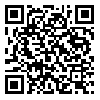Volume 19, Issue 1 (5-2024)
MGj 2024, 19(1): 35-47 |
Back to browse issues page
Download citation:
BibTeX | RIS | EndNote | Medlars | ProCite | Reference Manager | RefWorks
Send citation to:



BibTeX | RIS | EndNote | Medlars | ProCite | Reference Manager | RefWorks
Send citation to:
Abbasi-Vineh M A, Emadpour M, Barahimipour R. Genetic screening method for Chlamydomonas reinhardtii lines efficiently expressing nuclear transgenes. MGj 2024; 19 (1) : 4
URL: http://mg.genetics.ir/article-1-1840-en.html
URL: http://mg.genetics.ir/article-1-1840-en.html
Tarbiat Modares University
Abstract: (1156 Views)
Genetic screening method for Chlamydomonas reinhardtii lines efficiently expressing nuclear transgenes
Mohammad Ali Abbasi-Vineh1, Masoumeh Emadpour 1*, Rouhollah Barahimipour 2
1- Ph.D. Student, Assistant Professor, Department of Agricultural Biotechnology, Faculty of Agriculture, Tarbiat Modares University, Tehran, Iran
2- Researcher, Max-Planck Institute of Molecular Plant Physiology, Potsdam, Germany
* Corresponding Author; Email: m.emadpour@modares.ac.ir
Abstract
The unicellular green microalga Chlamydomonas reinhardtii is introduced as a potential platform for the production of industrial molecules such as biofuels, therapeutic proteins, or industrial enzymes. Expressing nuclear transgenes offers several advantages compared to that in chloroplast, including the expression and purification of secreted proteins as well as the ability to perform post-translational modifications such as glycosylation. However, the random gene insertion resulting in positional effects on gene expression or gene insertion in transcriptionally silent regions is a limitation of gene expression in the nucleus. In current study, a genetic method was designed and optimized for the screening and selection of nuclear transgenes in C. reinhardtii. The genetic method was designed based on YFP gene expression system driven by the T7 RNA polymerase protein. To do this, a chloroplast expression cassette containing the YFP gene under the control of the T7 promoter and a nuclear cassette expressing the T7 RNA polymerase gene were cloned. Having obtained the stable homoplasmic transplastomic lines, they were super-transformed with the nuclear expression cassette. The results showed a wide range of fluorescent signal emission in super-transformed lines expressing YFP protein. In fact, the more nucleus-encoded RNA polymerase was transcribed and then translated to transfer the protein into the chloroplast, the more transcription of the YFP gene controlled by the T7 promoter was achieved. The results showed that the genetic screening method could be well applied not only to screen Chlamydomonas lines harboring the expression cassette inserted into transcriptionally active genomic regions but also to select the lines with a greater ability for transgene expression.
Mohammad Ali Abbasi-Vineh1, Masoumeh Emadpour 1*, Rouhollah Barahimipour 2
1- Ph.D. Student, Assistant Professor, Department of Agricultural Biotechnology, Faculty of Agriculture, Tarbiat Modares University, Tehran, Iran
2- Researcher, Max-Planck Institute of Molecular Plant Physiology, Potsdam, Germany
* Corresponding Author; Email: m.emadpour@modares.ac.ir
Abstract
The unicellular green microalga Chlamydomonas reinhardtii is introduced as a potential platform for the production of industrial molecules such as biofuels, therapeutic proteins, or industrial enzymes. Expressing nuclear transgenes offers several advantages compared to that in chloroplast, including the expression and purification of secreted proteins as well as the ability to perform post-translational modifications such as glycosylation. However, the random gene insertion resulting in positional effects on gene expression or gene insertion in transcriptionally silent regions is a limitation of gene expression in the nucleus. In current study, a genetic method was designed and optimized for the screening and selection of nuclear transgenes in C. reinhardtii. The genetic method was designed based on YFP gene expression system driven by the T7 RNA polymerase protein. To do this, a chloroplast expression cassette containing the YFP gene under the control of the T7 promoter and a nuclear cassette expressing the T7 RNA polymerase gene were cloned. Having obtained the stable homoplasmic transplastomic lines, they were super-transformed with the nuclear expression cassette. The results showed a wide range of fluorescent signal emission in super-transformed lines expressing YFP protein. In fact, the more nucleus-encoded RNA polymerase was transcribed and then translated to transfer the protein into the chloroplast, the more transcription of the YFP gene controlled by the T7 promoter was achieved. The results showed that the genetic screening method could be well applied not only to screen Chlamydomonas lines harboring the expression cassette inserted into transcriptionally active genomic regions but also to select the lines with a greater ability for transgene expression.
Article number: 4
Type of Study: Applicable |
Subject:
Subject 01
Received: 2023/09/30 | Accepted: 2024/03/9 | Published: 2024/08/25
Received: 2023/09/30 | Accepted: 2024/03/9 | Published: 2024/08/25
Send email to the article author
| Rights and permissions | |
 |
This work is licensed under a Creative Commons Attribution-NonCommercial 4.0 International License. |





